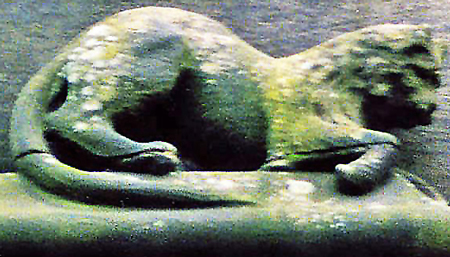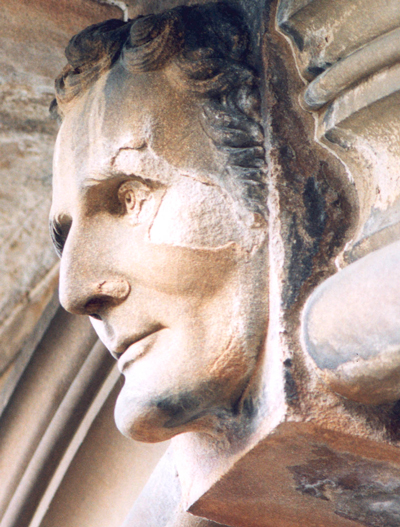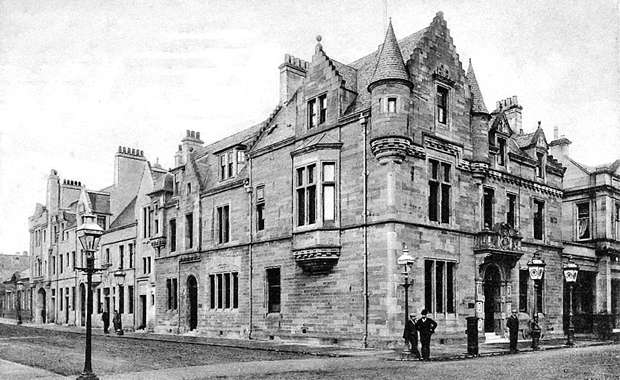IT IS hard to imagine what was arguably Helensburgh’s most important building becoming a delicatessen and restaurant . . . but that is what is going to happen.
Glasgow-based grocery chain Peckham’s have been given the go-ahead by Argyll and Bute Council to convert the B-listed former Municipal Buildings at the corner of East Princes Street and Sinclair Street.
They also plan function suites, six flats and outdoor seating areas as they transform the building which fior some time has had vegetation growing from the outside walls.
In response to representations from statutory consultees, and also from the owners of the neighbouring Gordon’s Chemist in Sinclair Street, the company agreed to scrap plans to provide outdoor seating at the rear, to reduce the width of the outdoor seating area in Sinclair Street, and not to continue the outdoor seating around the corner into East Princes Street.
This was because of concerns about smells and noise from the kitchen and outdoor seating areas.
On a recent visit the old building recently it was sad to see the state in which the Town Council chamber and the Police Court had been left, despite it being put on the market last year by the council for £220,000.
So it is good news that the future looks bright for the buildings designed and built by leading architect John Honeyman in 1878 on the site of the old town theatre acquired by the Town Council around 1850.
The story began in 1846, when the Town Council obtained a Police Act and a Harbour Act. They then bought what had been the theatre for use as the Municipal Buildings, Police Station and Police Court.
For several decades the councillors met in the converted orchestra pit and boxes. The ground floor, which had been the stage, became the police office with adjoining cells.
On Sundays the main part of the hall was used by religious groups who did not yet have a church.
Once, as the preacher delivered the Holy Word with devout eloquence, his monologue was stopped by a cry from the cells: “O! Will ye no let me oot; let me oot o’ this awfu’ pit? Will nane listen to me? O! Whit have I dune tae be cast inta darkness? Let me oot; let me oot.”
A religious service was not what those arrested for being drunk wanted to listen to — they were a real captive audience.
One of the groups who used the old theatre for church services in the early 1840s was the Dissenters, who were later to build St Columba Church. This group included Mrs Margaret Bell, widow of Helensburgh’s first Provost, Henry Bell.
An upper floor was also used as a school until 1856 when Grant Street School was built.
Honeyman rebuilt on the site in 1878 in Scots Baronial style at a cost of £6,000, and the building was extended eastwards along East Princes Street as the Railway Station buildings were attached in 1899 as the end of the line for the original Glasgow, Dumbarton and Helensburgh Railway, the main feature being the glass canopy covering the station.
In 1902 local architect Alexander Nisbet Paterson — who also designed Clyde Street School and the Cenotaph in Hermitage Park— was commissioned to design an extension to the Municipal Buildings northwards up Sinclair Street.
This was to contain a Police Office with cells, a Fire Station, and an entrance to the Court Hall, all entered from Sinclair Street. He did it in a more restrained Scottish style.
One result of this arrangement, which was completed in 1906, was that traffic had to halt whenever there was a fire and the fire engine emerged from behind the red doors.
 Paterson’s quirky side is reflected on the outside where he placed a stone cat and handcuffs.
Paterson’s quirky side is reflected on the outside where he placed a stone cat and handcuffs.
It is said that the cat had become the pet of the builders, so the architect, who was a cat lover, immortalised it in stone on the second storey on the Sinclair Street side.
As the extension housed the police station, he also added two pairs of stone handcuffs above the door.
In its heyday, the Burgh Police Court was presided over by either the Provost or one of the two Bailies. The Town Clerk acted as clerk to the court, and a local solicitor held the appointment of Burgh Prosecutor.
In the 1960s, the court sat once a week, unless someone had been arrested and spent the night in the police cells, in which case a custody hearing was arranged in the morning to decide on continued detention pending a further hearing, or bail.
As the more serious offences were heard in the Sheriff Court in Dumbarton, the town court dealt mainly with breaches of the peace, very minor assaults and thefts, parking, parking without lights, and committing a nuisance — which was always described as “to the annoyance of” someone, usually a police officer.
The more unusual cases included a street photographer using a monkey as a prop without a licence, selling flowers in the street without a licence, and drunk in charge of a bicycle.
Thanks to the Royal Navy’s high profile Provost Marshal unit, very few Faslane sailors appeared in the court, and when one did, he would be accompanied by an officer.
On one occasion in the 1970s this led to an extraordinary altercation.
When one matelot was found guilty of an offence by a Bailie, the young junior officer took exception to the decision and launched a broadside at the lady magistrate.
It was all very embarrassing, was eventually resolved with an apology, and provided a great story for the Advertiser.
Other cases around that time included a local man being jailed for 60 days for ‘loitering with intent’ at Braeholm Maternity Hospital, another man being fined for failing to keep records while driving a town firm’s delivery van, and a third admitting to the theft of two typewriter ribbons and 57 elastic bands.
In 1965 the Queen and the Duke of Edinburgh visited the Municipal Buildings to inspect a redecoration, and councillors and their wives were presented in the council chamber.
A few years later a new police station was built on East King Street, and the Fire Brigade moved to a new and less inconvenient site on South King Street.
The fate of various artefacts still in the building — including carved chairs, portraits and plaques — is currently being decided by the council’s Helensburgh and Lomond Area committee, with some going to the Civic Centre in East Clyde Street and the Library in West King Street.
 One of them is a memorial tablet which the Town Council commissioned in recognition of the patriotic voluntary service of 45 young town and district men who served in the Boer War.
One of them is a memorial tablet which the Town Council commissioned in recognition of the patriotic voluntary service of 45 young town and district men who served in the Boer War.
It was designed by well-known burgh architect William Leiper, and when it was unveiled the Helensburgh and Gareloch Times described it as being of a most artistic character. It was given a prominent place.
The local weekly reported: “It will form a very fitting and permanent memorial of the men who, at a time of considerable strain and stress, rendered good service to the Empire.”
It is possible that it may be lent to Helensburgh Heritage Trust to display. But another commemorative plaque, this time on the front of the building, will hopefully remain where it is.
The plaque for TV inventor John Logie Baird was unveiled on May 1 1952 by Provost William Lever, in the presence of his sister, Annie Baird, daughter Diana and son Malcolm, now the Heritage Trust president.
If the new owners agree, there will be a second plaque on the other side of the front door. This will mark the achievements of first Provost and steamship pioneer Henry Bell — a bust of whom is above the front door.
It will be erected next year by Historic Scotland, following a nomination from the Heritage Trust, and will be similar to one already placed outside Baird’s former home in West Argyle Street — also nominated by the Trust.
